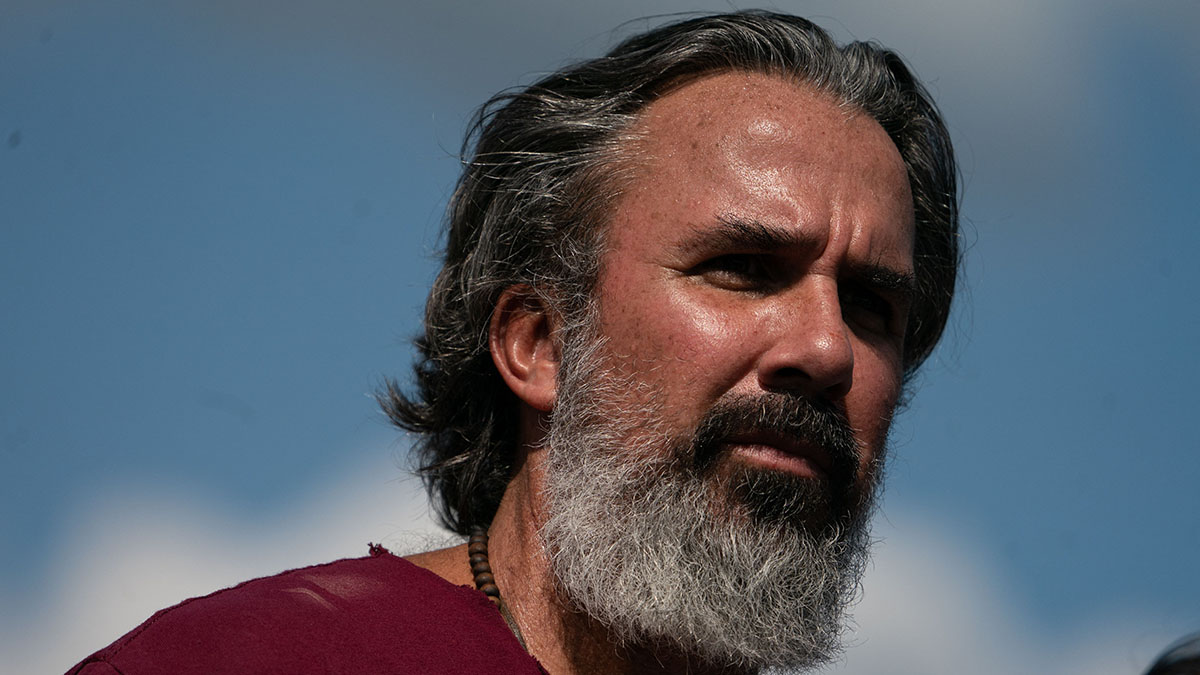Nearly six years later, the 1200 building on the corner of the Marjory Stoneman Douglas High School campus is still a grim time capsule. The inside has been left exactly as it was on the day when 17 people were murdered and 17 more wounded.
Local member of Congress, Jared Moskowitz, and Parkland victim Max Schachter realized months ago that touring the crime scene would have a visceral impact on lawmakers and policymakers, so they organized visits to the school. Politicians from both sides of the aisle, state officials, and law enforcement leaders have toured the building.
Monday, U.S. Secretary of Education Miguel Cardona experienced it, guided by family members of the victims.
“The visit this morning is the beginning of a relationship that I want to have with this community,” Cardona said at a roundtable discussion after the tour.
Get South Florida local news, weather forecasts and entertainment stories to your inbox. Sign up for NBC South Florida newsletters.
“I know you’re gonna be forever changed as is everyone else who’s been through that building, and all that matters is what we do next,” said Fred Guttenberg, who lost his daughter, Jaime, in the shooting.
Cardona convened the panel because, he said, he wanted to learn about the best school safety practices, bring them back to Washington, and encourage every state to adopt them.
“Just learn from Parkland so this doesn’t happen in your community, because we must prioritize safety before education because you can’t teach dead kids, and once you walk through that building, you get it, there’s no question about it,” said Schachter during the discussion.
Parkland School Tragedy
His son, Alex, was a freshman when he was murdered.
Moskowitz, who’s a Stoneman Douglas alumnus, paid tribute to the families who turned their immense personal grief into action, working tirelessly on school safety issues.
“These families have dedicated themselves to try to limit the amount of parents that wind up joining an exclusive that no other parents want to be a part of,” the Democrat from Parkland said.
“How do we create a shared culture of, we need to do this now, to prevent, not to react?” Cardona asked the panel.
“The idea, see something say something, having those response apps available,” replied school board member Debbi Hixon, whose husband, Chris Hixon, confronted the shooter and was shot at point-blank range.
“Accountability, making people not only buy into it, but holding them accountable for their actions,” added Tony Montalto, the cofounder of Stand With Parkland.
Montalto’s daughter, Gina, was murdered in the massacre.
Stacey Lippel was one of the panelists. She is a teacher at Stoneman Douglas who was shot as she ushered kids to safety during the rampage. Lippel thinks today’s experience will lead to school safety improvements nationwide.
“Everything was as we left it, it’s untouched, I think it would have a profound effect on anybody, especially someone who only heard about it or saw pictures of it, it’s very different from experiencing it firsthand,” said Lippel, who said she found meaningful closure in going back into the building to retrieve personal effects from her classroom.
“What else does it take for us to move if children dying is not enough?” Cardona said, asking a rhetorical question.
The secretary, who was working in Connecticut at the time of the Sandy Hook Elementary School massacre, said thoughts and prayers are an inadequate response. Cardona said he supports the reforms Florida already enacted, including extreme risk protection orders, better threat assessments, and school resource officers at every school. He also said more must be done. Cardona called for restrictions on what he calls “weapons of war.”


